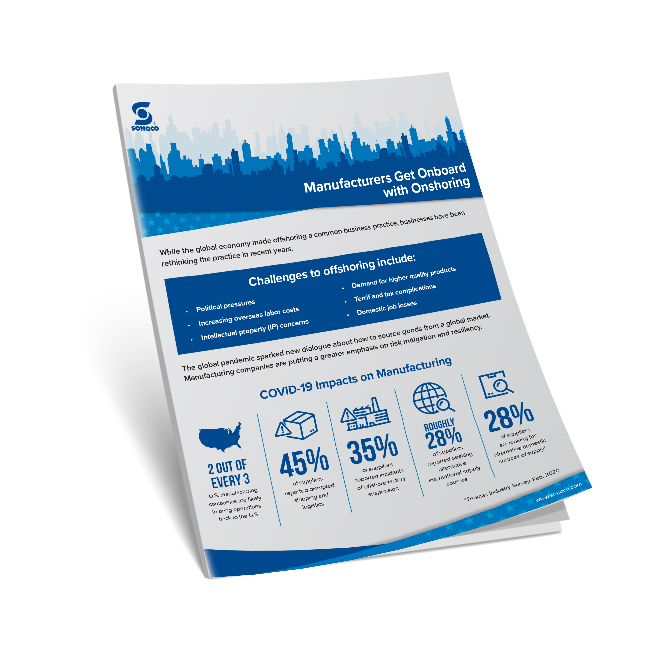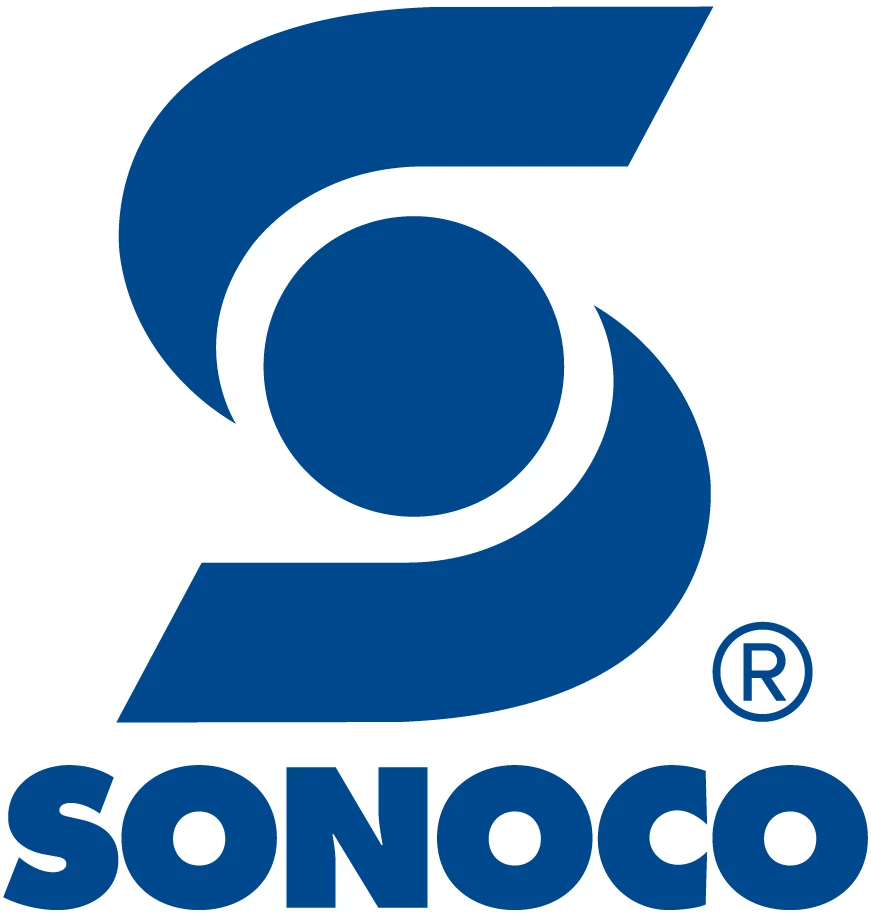Before the early 1980’s, manufacturing was largely a domestic process in the United States. But as advances in technology, communications and transportation opened the doors to a global economy, businesses began taking advantage of manufacturing overseas. Computer-based automation, programmable logic controllers, cheap labor and faster cargo ships led many American companies to move production offshore to places like China, South Korea, Vietnam, Indonesia, Thailand and Mexico.
Offshoring soon became a common business practice, and trade policy actions at the time made it easier than ever. For the next 20-30 years, the cost benefits and higher profits of producing goods overseas were simply too good to pass up – and in some industries, keeping pace with the competition demanded it. At the height of the offshoring era, about one in five manufacturing companies had production facilities in China.
In recent years, however, businesses have been rethinking the practice of offshoring. Political pressures, increasing overseas labor costs, intellectual property (IP) concerns, the demand for higher quality products, domestic job losses and growing concerns about overextended supply lines have led many U.S companies to consider bringing production back to U.S. shores. Domestic production offers financial and logistical advantages such as:
- Reduced shipping costs.
- Negligible differences in labor costs.
- Fewer compliance issues.
- Lower risk of interruption.
- More consistent quality standards.
- Reduced cultural and language barriers.
- Simpler supply chain management.
- Tariff avoidance.
- Domestic job creation.
Enter COVID-19, the great accelerator of global economic trends. Just as it fueled the dramatic growth of megatrends like automation and ecommerce, the pandemic exposed the inherent fragility of our thinly stretched supply chains.
The arrival of COVID-19 has sparked new dialogue about how to source goods from a global market in a way that minimizes time and costs while also being less susceptible to interruption. Instead of focusing exclusively on cost and efficiency, manufacturing companies are now putting a greater emphasis on risk mitigation and resiliency. The result is a greater demand for excess capacity and diversification in sourcing while intensifying onshoring initiatives.
The COVID-19 pandemic highlights the inherent risks of relying exclusively on suppliers located halfway around the world. In China, for example, where large numbers of people work in close quarters, COVID-19 spread like wildfire, forcing plant closures and interrupting orders. Companies who were able to maintain at least some level of production faced inflated shipping costs because of logistical constraints.
The current crisis has also revealed our overreliance on other countries as critical sources of medicines, medical devices and personal protective equipment. Committed to reshoring the production of components critical to national security, Federal and State governments are offering manufacturers incentives to reshore assets for the production of personal protective equipment, medical devices, pharmaceuticals and products associated with national defense.

Despite the dramatic impacts a global calamity like COVID-19 can have on business operations, the pandemic has not been the only cause of recent supply chain disruption. The U.S.-China trade war has also prompted companies to consider moving production capacity back to the U.S. The Trump administration’s new policies reward manufacturers with a variety of incentives for onshoring and reshoring, while imposing increased taxes and other penalties on companies who continue offshoring. As a result, many major American companies have either cancelled offshoring plans or decided to move production to the United States.
Faced with increasing risks, trade tariffs and rapidly shrinking cost benefits, more American-based manufacturers are expected to embrace domestic production moving forward. If your company is thinking about onshoring or reshoring, consider the following recommendations in your decision-making process:
- Evaluate local, state and federal incentives.
- Identify trusted third-party production sites to make sure they can handle the designs, material requirements and quality controls.
- Locate large population centers to fill skilled job openings.
- To optimize supply chains and maximize efficiencies, partner with a trusted contractor who has domestic production facilities close to your operations.
- Weigh government incentives and other onshoring benefits against the short-term costs of changing production locations and partners.
- Seek to incorporate automated production methods.
- Do your due diligence to ensure your product is in the hands of highly skilled workers.
One production process that can be readily moved to the U.S. is plastic injection molding. Used for small, medium and large production runs of identical products, parts and components, plastic injection molding is a critical manufacturing operation used by a wide range of industries. While manufacturers have long relied on third-party overseas manufacturers, onshoring injection molding allows brands to save time and money, while delivering superior quality and increased reliability. Additional benefits include:
Speed – Simply put, local production is faster. Offshoring involves the shipping of goods, materials and services to faraway places, which automatically increases lead times. Additionally, if customer demands require modifications, changes can be implemented and put in market much faster by a localized supplier.
Risk Aversion – There are risks associated with making products or parts overseas that can be mitigated through reshoring. Quality control and consistency can be supervised more closely and there are safety regulations in the U.S. that might not exist in other places. Using a domestic supplier for injection molding carriers minimal intellectual property and compliance risks as well.
Convenience – Working with a domestic partner for plastic injection molding gives you more design control, flexibility and better communication.
Quality – Third-party manufacturers who have extensive experience and expertise in plastic injection molding can ensure your project meets or exceeds U.S. industry standards and your own specific quality control requirements.
Simplicity – Onshoring makes finalizing designs and production runs easy. Less complexity also means more time to focus on what you do best.
Savings – Onshoring significantly reduces shipping and logistics costs because your products or parts won’t have far to travel.
Whether you’re using injection molded plastics to make sophisticated electronic components, prevent contamination of apparel products or make medicine bottles tamper proof, Sonoco combines more than 120 years of experience and craftsmanship with state-of-the-art automation and ample production capacity to make your onshoring experience as fast and seamless as possible.
At Sonoco, our comprehensive approach to plastic injection molding includes advanced design and engineering assistance, mold making, prototyping, real-world testing and automated assembly services. For more information, personalized quotes, product samples or to learn more about Sonoco’s comprehensive injection molding services, contact allene.sterritt@sonoco.com.
Shoring Up Terminology
A variety of terms are used to describe the various location strategies for manufacturing production plants. Here’s what each term means:
Onshoring – Involves moving physical production facilities and capabilities from foreign soil to the United States. This may mean moving physical assets or terminating contracts with foreign production contractors in favor of a U.S.-based contractors.
Reshoring – Practically synonymous with “onshoring” and the two terms are often used interchangeably with one slight difference. Reshoring refers to an operation that is returning to the U.S. after having been moved out of the country previously.
Nearshoring – Refers to the movement of manufacturing assets or contracts to companies outside of the United States but still close enough to keep shipping and related supply chain costs affordable.
Offshoring – Refers to outsourcing manufacturing or moving assets outside the primary country of operations. American companies have been offshoring production to Asia and Southeast Asia for many years. Offshoring has become less popular in recent years due to higher costs, complex logistics and politics.
2 out of 3 U.S. Companies Likely to Move Production Back to U.S.
According to a recent issue of the Thomas Industry Survey, about two out of every three American manufacturing companies have reported they are likely to bring operations back to the U.S. The report says the epidemic may prompt manufacturers to more aggressively diversify their supply chains and consider reshoring some of their production capacity. Some 45% of suppliers reported disrupted shipping and logistics, while 35% reported incidents of offshore factory suspension. Roughly 28% of suppliers reported seeking alternative international supply sources, while another 28% are looking for alternative domestic sources of supply.

